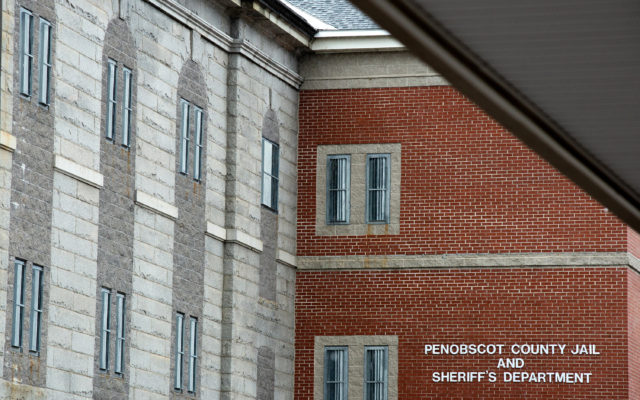
Penobscot County is bracing for a budget crisis
By Marie Weidmayer, Bangor Daily News Staff
Penobscot County is facing a nearly $3.5 million budget gap to cover the jail’s soaring expenses — a cost likely to be passed on to residents unless municipalities can find a way to slash their own budgets.
Penobscot County Commissioners have for years held out hope for more state funding for the jail, which has seen its revenue deficit grow from about $1 million in 2021 to $3 million in 2024. That deficit reached $3.4 million in 2025.
Without that state funding, Penobscot County must now fix the jail budget gap itself. To do so, the county will need to raise the amount of taxes it collects from municipalities by 14%, commissioner Andre Cushing told leaders from more than a dozen communities at a Sept. 25 meeting. That number could change based on other county departments’ budgets, which are still being finalized.
If Penobscot County does raise its taxes, it will have a ripple effect throughout the county, forcing municipalities to either cut back on their own budgets or pass the taxes on to residents.
This is the second Maine county in the past month to face a multimillion dollar budget shortfall, as Washington County is dealing with an $11 million gap. The potential tax increases for Penobscot County come as Mainers are already pushing back against surging property taxes and school budgets.
The jail has an annual budget of just under $15.7 million for 2025, nearly triple its budget of roughly $5.9 million in 2015. The county will spend a record $2.5 million this year to send people to other jails because the facility cannot hold everyone.
Commissioners hoped the state would provide more supplemental jail funding, but it’s stayed about the same amount for five years, Cushing told the Bangor Daily News. During that same time, the gap between the jail expenses and revenue accelerated to the point where it’s not sustainable, he said.
For years, the county has filled “a large portion” of that deficit with money from its general undesignated fund balance, eroding it to the level where the county needed to take out larger amounts of short-term debt, Cushing said.
Now there is an “uncollectable” balance the jail owes the county, according to a letter to towns from County Administrator Scott Adkins. There is only $2.5 million left in the general fund balance.
It’s critical to figure out funding now because there won’t be enough money from that short-term loan to get through the fiscal year, Cushing said.
Raising taxes by 14% is not sustainable for the municipalities, Brewer Mayor Michele Daniels said. That expense will get passed on directly to taxpayers, because Brewer has already slimmed its budget down as much as possible, she said.
Daniels served on the Penobscot County Budget Committee last year and voted against the proposed budget because of the growing taxes. There was a 9.65% tax increase from 2024 to 2025, for a budget just under $31.5 million, according to county documents.
She’s concerned about the budget changes still to come from the other departments within the county as well. Even if budgets are slimmed down, there are cost of living adjustments, equipment that needs to be replaced and more, Daniels said.
People already complain that taxes are too high, and many don’t realize that part of their taxes go to the county, Lincoln Town Manager Rick Bronson said.
Commissioners are facing a years-old problem created by the Legislature and funding cuts, but it’s up to the county to fix it, Bronson said. Most counties are going to end up with similar issues, he said.
Bronson pointed to the $11 million deficit Washington County is facing.
“I’m glad that Penobscot County is not in that position, but if we continue for a few years as is, we will be,” Bronson said.
Washington County will ask its voters to approve an $11 million bond to fix its budget crisis. However, residents in Penobscot County will not have a say in their county taxes.
Several leaders also complained about the services their communities get from the county in return for the surging costs.
For example, the bigger towns and cities in Penobscot County fund most of the county’s budget but benefit the least, Bronson and Daniels said. Municipalities with full time police departments pay the most to fund the sheriff’s office but do not receive services, Bronson said.
“I think that it’s unfair that these larger towns pay to have truly functioning 24/7 law enforcement and provide the county sheriff to the little ones who don’t pay,” Bronson said.
Penobscot County is trying to work with towns to address this shortfall. Orono Town Manager Clint Deschene said the meeting commissioners held with local leaders was the first time he’s seen something like that in more than a decade on the job.
Creating solutions to a budget shortfall is hard and Deschene said he’s glad the county seems open to ideas from the towns that will be directly affected.
If the county taxes do go up 14%, it will create a challenge for Orono’s next budget, Deschene said.
The state has a 4% cap on jail budget increases, except in “extraordinary circumstances.” The commission needs two out of three members to vote to exceed that cap, Cushing said.
A hearing before the county’s budget committee is scheduled for Nov. 18.